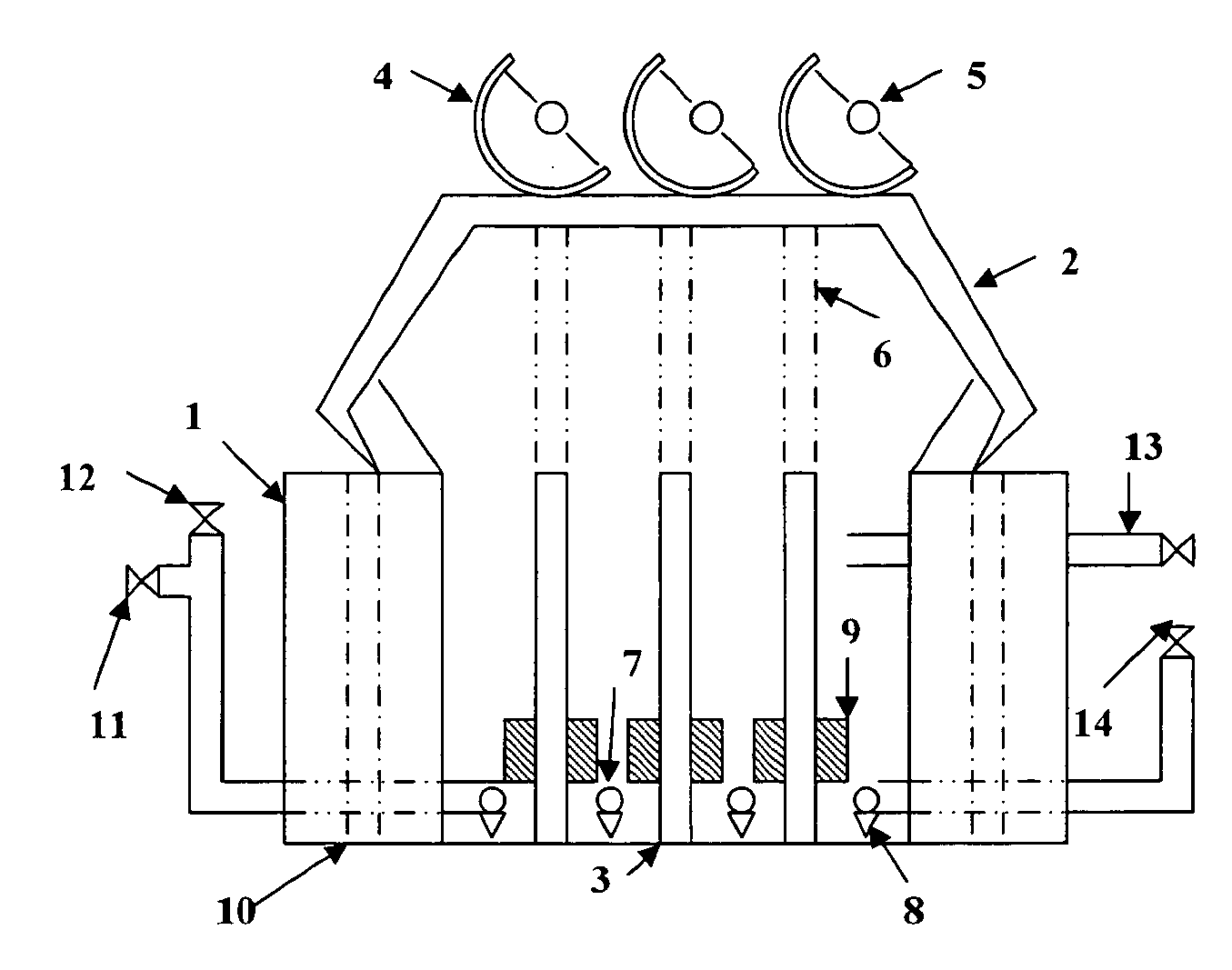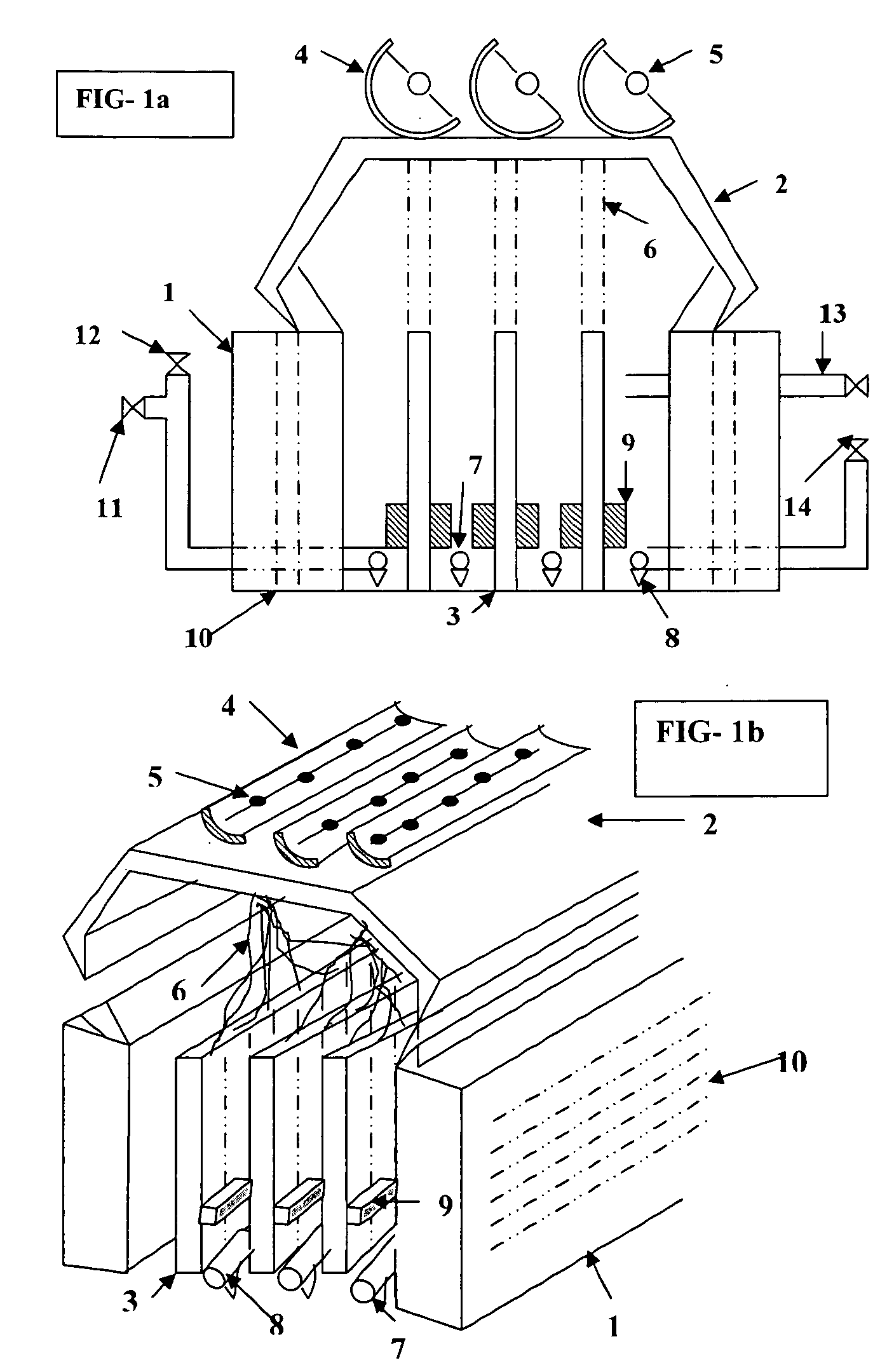Photo bioreactor and cultivation system for improved productivity of photoautotrophic cell cultures
a bioreactor and photoautotrophic cell technology, applied in the field of photobioreactor apparatus and cultivation system for improving the productivity of photoautotrophic cell culture, can solve the problems of poor productivity, frequent catastrophic loss of cultures, large footprint, etc., and achieve high and fast constant conversion efficiency
- Summary
- Abstract
- Description
- Claims
- Application Information
AI Technical Summary
Benefits of technology
Problems solved by technology
Method used
Image
Examples
example
[0065]The function and advantage of the present invention may be more fully understood from the examples below.
[0066]The challenge test was performed on Chlorella to analyze their growth kinetics, culture stability, effect of light intensity and parameter influences. In a pilot-scale photobioreactor system, the algae were exposed to a set of different medium and controlled environmental condition that are specifically selected to simulate operative conditions to which the algae will be exposed in the photobioreactor such as liquid medium composition; temperature; pH fluctuation; light intensity variation; light and dark exposure durations and light / dark transition frequency and pattern.
[0067]The following examples, is illustrative of certain embodiments of the invention, and do not exemplify the full scope of the invention.
[0068]A 700 L close top photobioreactor as represented in FIG. 1 with a working volume of 600 L was inoculated with Chlorella pyrenoidosa 0.01 g / l into modified K...
PUM
 Login to View More
Login to View More Abstract
Description
Claims
Application Information
 Login to View More
Login to View More - R&D
- Intellectual Property
- Life Sciences
- Materials
- Tech Scout
- Unparalleled Data Quality
- Higher Quality Content
- 60% Fewer Hallucinations
Browse by: Latest US Patents, China's latest patents, Technical Efficacy Thesaurus, Application Domain, Technology Topic, Popular Technical Reports.
© 2025 PatSnap. All rights reserved.Legal|Privacy policy|Modern Slavery Act Transparency Statement|Sitemap|About US| Contact US: help@patsnap.com



